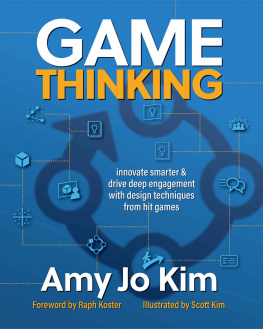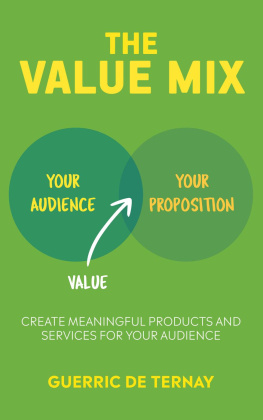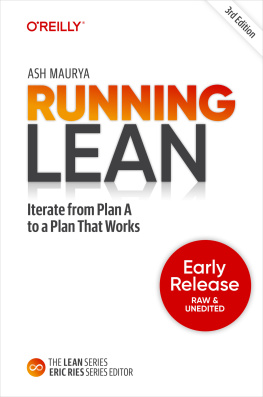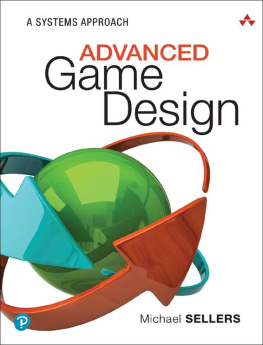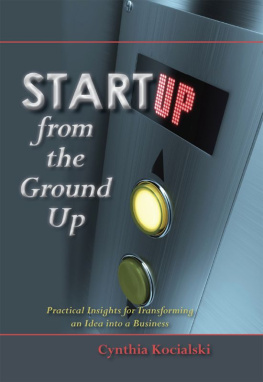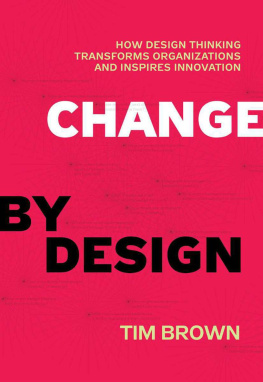Amy Jo Kim - Game Thinking: Innovate smarter & drive deep engagement with design techniques from hit games
Here you can read online Amy Jo Kim - Game Thinking: Innovate smarter & drive deep engagement with design techniques from hit games full text of the book (entire story) in english for free. Download pdf and epub, get meaning, cover and reviews about this ebook. year: 2018, publisher: gamethinking.io, genre: Home and family. Description of the work, (preface) as well as reviews are available. Best literature library LitArk.com created for fans of good reading and offers a wide selection of genres:
Romance novel
Science fiction
Adventure
Detective
Science
History
Home and family
Prose
Art
Politics
Computer
Non-fiction
Religion
Business
Children
Humor
Choose a favorite category and find really read worthwhile books. Enjoy immersion in the world of imagination, feel the emotions of the characters or learn something new for yourself, make an fascinating discovery.
- Book:Game Thinking: Innovate smarter & drive deep engagement with design techniques from hit games
- Author:
- Publisher:gamethinking.io
- Genre:
- Year:2018
- Rating:5 / 5
- Favourites:Add to favourites
- Your mark:
Game Thinking: Innovate smarter & drive deep engagement with design techniques from hit games: summary, description and annotation
We offer to read an annotation, description, summary or preface (depends on what the author of the book "Game Thinking: Innovate smarter & drive deep engagement with design techniques from hit games" wrote himself). If you haven't found the necessary information about the book — write in the comments, we will try to find it.
Successful innovations may end up reaching a mainstream audiencebut they never start off that way. Thats the paradox of innovation, most entrepreneurs fail to embrace: the typical people in your market are not the same ones you need to woo when bringing your idea to life.
Instead find the superfans hidden in your audience: Those willing to take risk and put up with a messy or incomplete solution in order to start solving the problem your product will eliminate in the future. Show your idea to these people. See what they make of it. What do they love about it? Where does it seem to go in the wrong direction? Allowing these early fans to play with your idea gives you fast and accurate answers to your most pressing questions long before your product is designed and built.
Game Thinking supercharges your progressThats where Game Thinking comes in. In this groundbreaking book, Amy Jo Kim lays out a step-by-step system for accelerating innovation, and crafting products that people love...and keep loving. The secret? Develop impossible to put down products by using techniques that the fast-moving games industry employs when making games that glue millions of players to their screens.
During her time working on genre-defining games like The Sims, Rock Band, and Ultima Online, Amy Jo learned that customers stick with products that help them get better at something they care about, like playing an instrument or leading a team. Amy Jo then used her insights from the game world to help hundreds of companies like Netflix, Disney, The New York Times, Ubisoft and Happify innovate faster and smarter.
Learn from the (game) mastersBuilding on the principles of lean/agile design and design thinking, Game Thinking covers four powerful strategies you can use to create your next hit product:
- Build a product that fits how people actually behave, using insights from your high-need Superfans
- Keep customers engaged and moving forward with a coherent and compelling customer journey
- Rapidly improve your product concept by testing and tuning the core experience
- Expand the core experience into a full product by following the Game Thinking roadmap
Amy Jo Kim: author's other books
Who wrote Game Thinking: Innovate smarter & drive deep engagement with design techniques from hit games? Find out the surname, the name of the author of the book and a list of all author's works by series.

